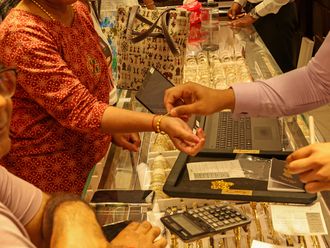Millennials are defined as young adults who were born in 1980 or later. In recent years, this segment has generated considerable interest among marketers, due to their size and spending potential.
In the US alone, there are estimated to be 80 million millennials accounting for a spending power of $200 billion (Dh734 billion). Given the young population in the Gulf, this segment is quite important for marketers in the region. In the West, marketers have come to realise that what appeals to millennials is quite different from earlier cohorts like the baby boomers, and in order to gain acceptance with this group, marketing strategies need to be reinvented.
Marketing to millennials needs to account for six key pillars, which are highly sought after by this generation:
• Peer group advocacy
As compared to earlier generations, millennials are far more likely to respond to advocacy by their peer group, rather than being influenced by traditional advertising. Millennials look at reviews posted on websites or on social media, opinions of people they follow on Twitter, etc, before making purchase decisions.
Hence, it is important for brands to create “circles of influence”, in order to gain acceptance. And brand buzz and advocacy become important measures to track. As a brand, Apple has been highly successful in creating buzz before any new product launch, one of the reasons for its high popularity with millennials.
Omnichannel
Millennials are able to switch with ease between the real and virtual worlds — and they expect to have similar experience across different types of channels. Hence, it’s important for brands to design their online experience in a way that consumers can interact with the product in similar manner to the way they would in the real world.
Jotun was one of the first paint brands in the region that designed its online experience such that consumers could try out how colours would look on their own walls, by uploading photos of their homes — a very neat example of an omnichannel experience.
Experiential
Earlier generations defined affluence by what they owned. In contrast, millennials define affluence by the experiences that they have had. They are very open to travel, cherish new experiences and are then happy to share these with their peer group.
This has implications not only for brands but also destinations that are trying to market themselves to tourists — it is not just about what you can buy anymore, but a lot more about the new experiences that you can get.
Efficient
Millennials value brands that help to enhance the quality of their lives, by simplifying complexity and making things efficient, thus giving them time to pursue other interests. A great example of this is Uber, which made urban travel simple and efficient — taking all the hassle out of managing traffic jams and parking issues.
In future, this will have a major impact on household appliances, where consumers will want seamless connectivity with their mobile phones, so that one device manages everything at home.
Creative
Millennials are by nature creative — they are constantly sharing pictures, videos and other content online. Brands need to recognise this inherent creativity and encourage co-creation with consumers. While engaging with consumers via fan sites, involving consumers in the product design process itself could lead to significant innovation.
Samsung’s 5-in-1 refrigerator which allows five different configurations of freezer and fridge, was perhaps based on consumer input into different needs depending driven by seasonality, type of products stocked, vacations etc.
Purposeful
Lastly, millennials like to see brands being driven by a purpose higher than just market share and bottom-line. They love brands that are seen to be either give back to society or help the environment and are also willing to pay higher for these brands.
Hence, brands need to highlight ethical practices, CSR (corporate social responsibility) policies and impact on environment if there are to strike a chord with millennials, both as consumers as well as prospective employees.
Brands trying to target millennials need to engage with them based on one or more of the pillars above, and do so with complete transparency in order to gain trust.
The writer heads the regional operations at the consultancy AMRB.












